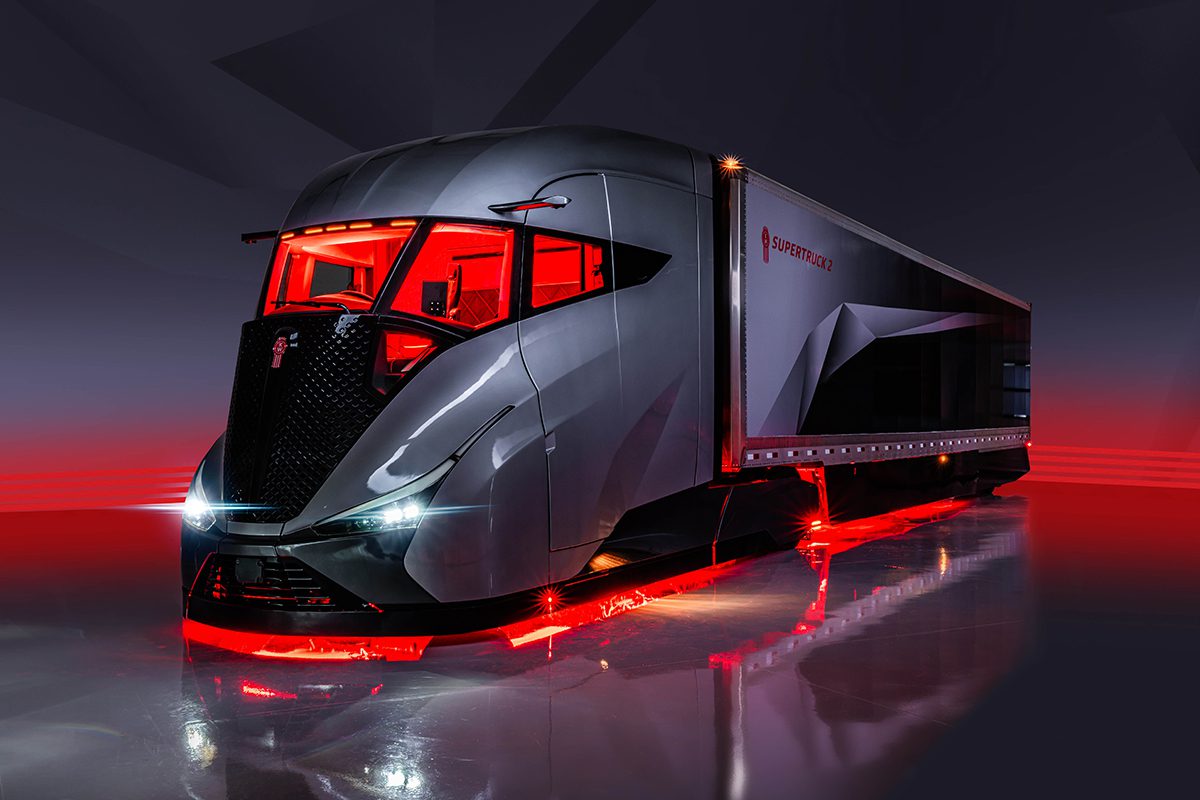Kenworth today showcased its SuperTruck 2 demonstrator vehicle, which was developed over a six-year period as part of a collaboration with the U.S. Department of Energy’s SuperTruck program.
“The goal was a 100% freight efficiency improvement over our 2009 Kenworth T660, which at the time was arguably the most fuel-efficient truck in the industry. We surpassed the performance of that model to improve efficiency by up to 136%,” said Jim Walenczak, general manager of Kenworth and PACCAR vice president. “SuperTruck 2 provided us with the opportunity to investigate new technologies in an early stage. As a result, we are able to commercialize new technologies much quicker than we would have otherwise.”
Starting with an ideal aerodynamic shape, Joe Adams, Kenworth’s chief engineer and his team asked themselves: What does the next generation vehicle for long haul transportation look like?
“What we produced pushes the limits in reducing aerodynamic drag while it also incorporates a new powertrain, said Adams. “But, with everything Kenworth, we wanted the SuperTruck 2 to embody ‘The Driver’s Truck.’ The result was a systematic approach to developing a futuristic looking, yet relevant vehicle with technologies that have the potential to be refined and commercialized.”
Kenworth’s SuperTruck 2 utilizes a PACCAR MX-11 engine, rated at 440 hp, which is driven through a PACCAR TX-12 automated transmission. In addition, the truck features a 48-volt electric generator. This creates a “mild” hybrid system and leverages next generation lithium-ion batteries. The batteries are re-charged through regenerative braking, allowing the truck to operate electric fans, electric steering, and power for electric coolant and HVAC pumps, which were previously mechanically driven. In addition, the 48V generator powers the exhaust heater in the in-house developed close coupled aftertreatment system which demonstrated CARB 2027 ultra-low NOx compliancy.
The resulting energy efficiency of combining a PACCAR MX-11 based engine, the mild hybrid based 48-volt auxiliaries, and energy waste recovery bench tested a program record 55.7% engine efficiency.
“We did this while keeping in mind the technologies we developed needed to be commercially viable,” said Maarten Meijer, PACCAR’s senior engineering manager for advanced technology. “To put that efficiency number into perspective, if this engine were to go into production, it would lead to a 10% fuel efficiency improvement. That’s an astonishing number.”
The aerodynamic design was enabled thanks in part by the location of the powertrain content, which fits between the framerails. This also allowed the engine to be lowered and placed behind the front axle. A reverse- splayed chassis allowed the engineering team to narrow the front of the truck and fully enclose the wheels within the bodywork. The entire hood and the chassis fairings were mounted directly to the cab, and they move with the entire cab as one unit. A variable suspension system was developed to customize ride height and optimize aerodynamics — Kenworth’s SuperTruck 2 can be raised over rough roads to avoid obstacles, then brought back down when running over smoother interstates. Combined, the sleekness means a 48% reduction in drag as compared to Kenworth’s baseline vehicle.
Even though SuperTruck 2 is powered by a diesel engine, the overall layout was designed to be powertrain agnostic. To support zero and near-zero emission solutions, the truck can efficiently package fuel cells, hydrogen tanks, natural gas tanks, or batteries without changing the basic cab.
“I’m very proud of this project,” added Walenczak. “Kenworth just celebrated its 100th anniversary, and SuperTruck 2 builds on Kenworth’s history of providing value to its customers. This project represents Kenworth’s innovation to ensure that our company’s future and our customers’ needs remain at the forefront. I’m very proud of the fact that we have paid tribute to our legacy. This truck is an important milestone for us — to look forward and see where we might be going in the future.”



